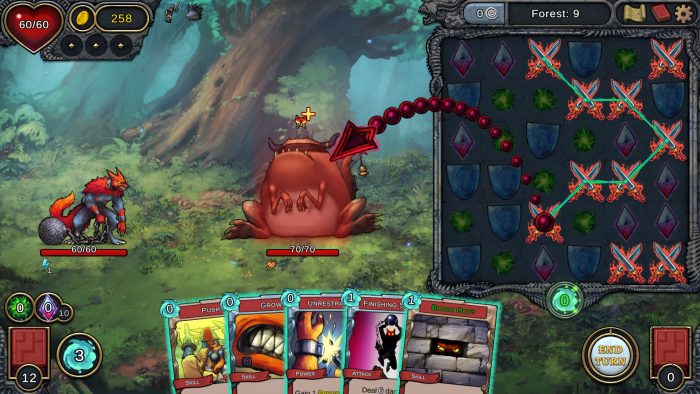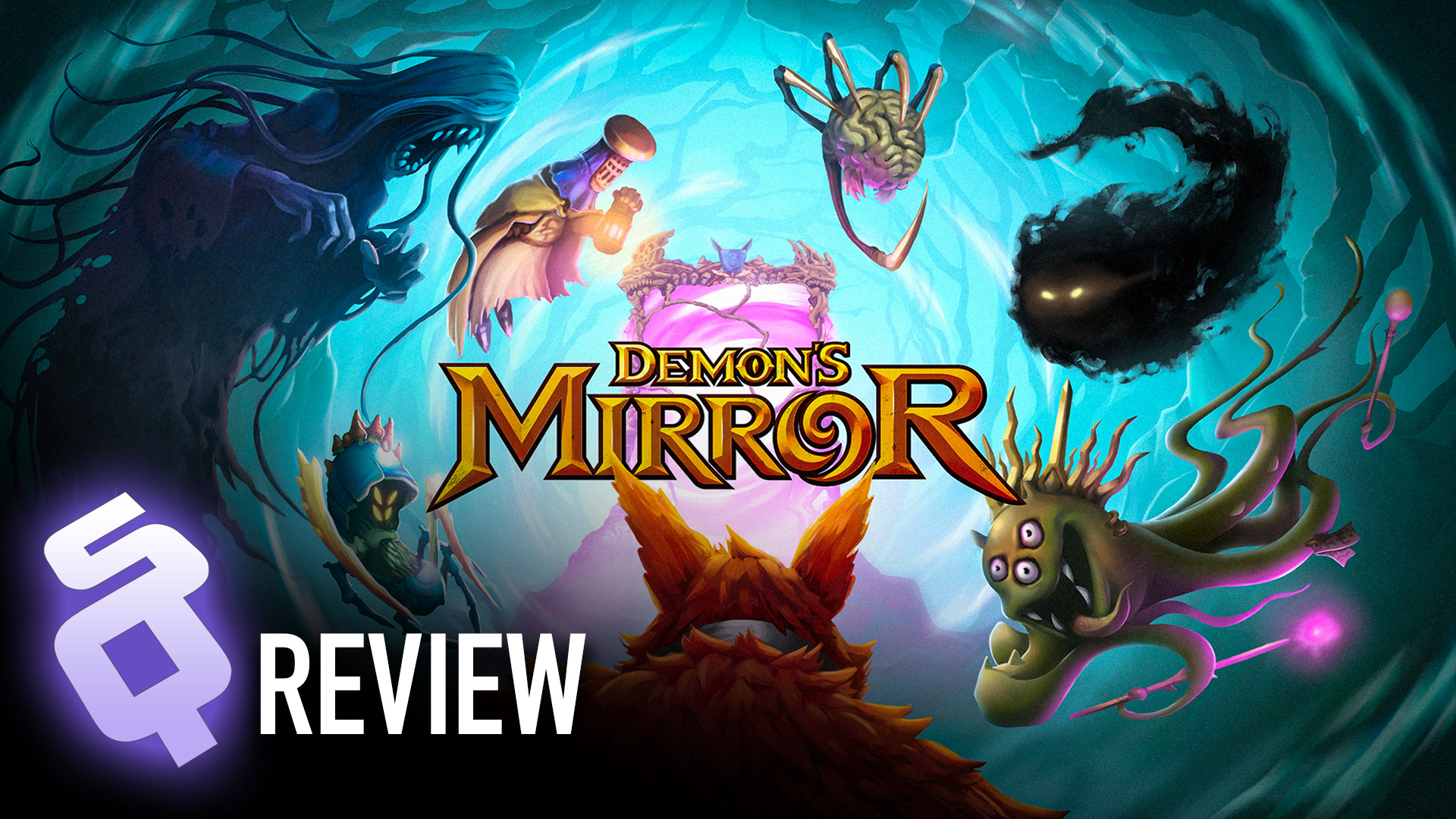Mashing together a card-based battler with a match-3 puzzler into a roguelike experience — to varying results.
There’s an idea in Demon’s Mirror that I really like. The game is a 2D mashup of card collection and match-3 gem elimination, both genres that have become a part of my gaming repertoire since the early 2000s, from Puzzle Quest‘s innovative match-3 RPG mechanics to Slay the Spire‘s card battling. We’ve seen successful disparate genre pairings in the past, so one that plays addictive puzzle with addictive card collecting should be an easy layup. And while there are good foundations for both cards and gems here, they don’t necessarily work together all that fluidly or innovatively.
I want this to work, but there’s just nothing hooking these together — or me to them.
Demon’s Mirror is firstly a roguelike focused on building a deck of cards that can be used in battles for various effects and attacks. The battles play out turn-based, so that we cycle through our deck and punch up our enemies before they do the same to us. We can use light attacks, build up for more powerful ones, use spells or heal or upgrade our shield to withstand the fight just a little longer. The game relies on activity points, with each card requiring a set amount — this keeps the turns in place.
This also shifts to the match-3 aspect of the game, as both cards and gems feed from the same pot of action points. There are a few types of gems, and these result in actions in the battles. Some of the gems are attacks, some are defense building or healing. Sometimes the enemies will drop their gems on the board, and we need to eliminate them before they initiate another attack. The more gems we combo, the more powerful the action is.

The strategy of the game is to balance which of the sides we utilize, our deck or the gem board. The gem side is essentially the same every run, but the deck we build is unique based on what cards we’re finding on the map. And that’s where things sort of wane in interest for me, at least from the idea of using both of the aspects. Early in a run I find myself having a blast jumping back and forth between the gems and my deck, sometimes focusing on cards for a few battles and others utilizing the gems more, but as soon as my deck becomes powerful enough I almost avoid the match-3 side completely. My deck can handle all of the battles on its own, with some lite jumps into the other side to maybe clear out the enemy’s gem if I don’t think I have enough time, but for the most part it becomes a sort of wholly separate, missable thing.
It’s really the inability for the two halves to work off of each other that slows down the experience for me. It’s not doing anything special with either aspect, and they don’t really combo in any meaningful way. Even after 7, 8, 9 runs of the game I kept asking myself if this was going to show any change — and it really doesn’t. It’s a fine game, it functions well, it has nice visuals and even though the action on screen can look chaotic it’s actually very easy to get into. I think there are people that are really going to like this, and it’s going to be up their alley, but beyond the early run or two it doesn’t quite feel engaging or surprising enough to keep me coming back. There’s something here, but it may not be built up enough yet.
This review is based on a Steam code sent to SideQuesting by the publisher. It first appeared on The SideQuest Live for September 11, 2024. Images and video courtesy the publisher.


No Comments